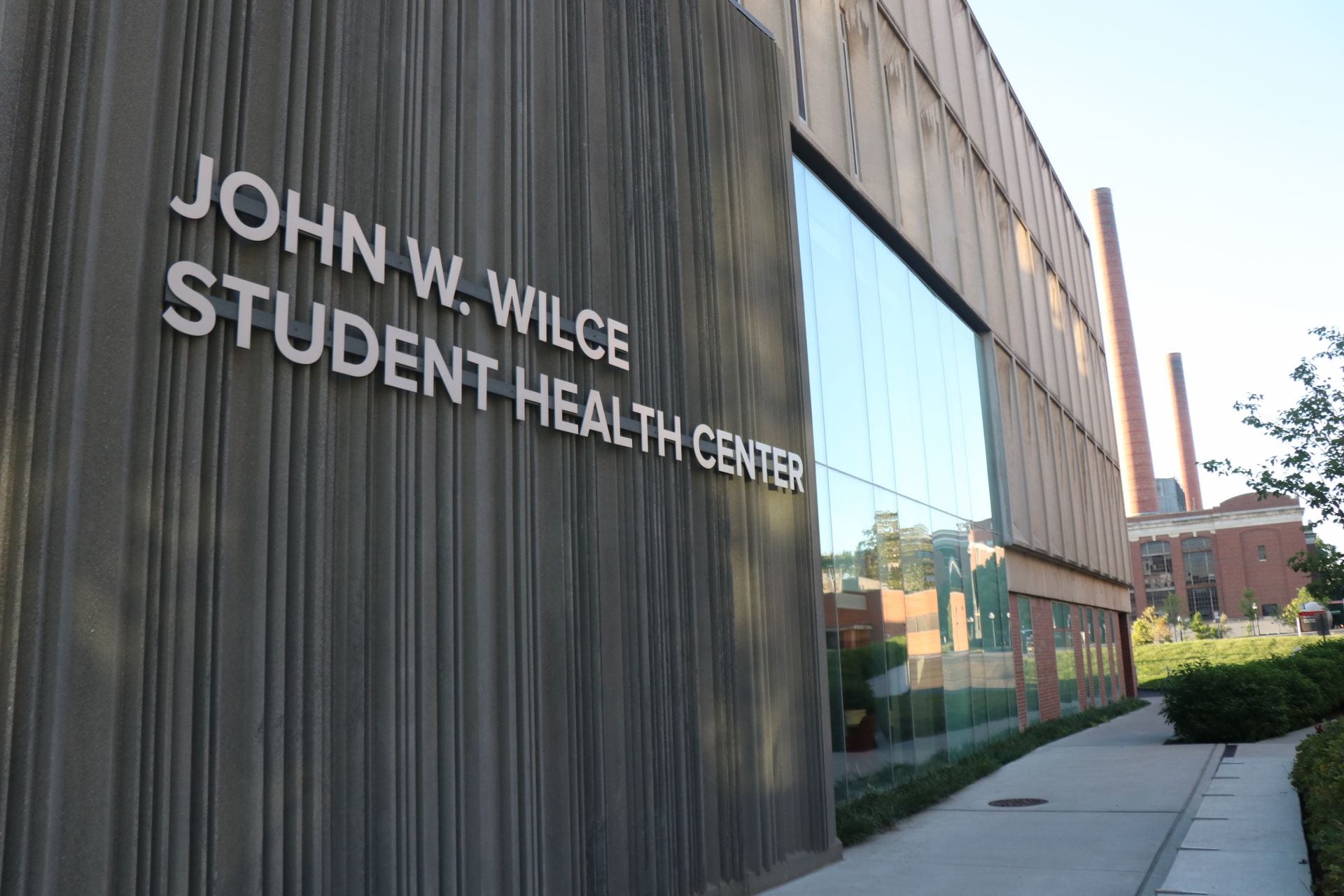
The John W. Wilce Student Health Center provides a variety of health care services to Ohio State students. Credit: Casey Cascaldo | Lantern File Photo
As the air gets colder in Columbus, many students may find themselves coping with seasonal affective disorder for the first time.
SAD, previously known as seasonal depression, manifests in seasons with a lack of sunlight. Symptoms may include an overwhelming feeling of sadness and a loss of energy, according to the DSM-5, and it can cause people to feel out of touch with their daily routine as the lack of sunlight changes the biological clock.
“Students dealing with SAD may show a lack of motivation, or lack of energy,” Cailee Cheski, marketing coordinator of the Buckeyes Against Suicide Campaign and third-year in psychology, said. “The symptoms of SAD are very similar to those of depression, but they show up during those colder months.”
According to a previous Lantern article, experts said an increase in indoor activities can make college students vulnerable to seasonal depression, and a change in time and weather creates stress — which can lead to medical and physical concerns.
However, there are always coping mechanisms that can help overcome difficulties in college, even if SAD is a first-time struggle, such as engaging in personal hobbies like a show or movie, Cheski said.
“The number one coping mechanism that I’d turn to would be self-care,” Cheski said
Light boxes mimic natural sunlight when days are cloudy and can be used to promote natural serotonin production in the brain so SAD’s effects are minimized, according to the Mayo Clinic for Medical Education and Research.
“Light boxes have full spectrum light, and you just sit in front of one for 10 to 15 minutes a day,” Katie Weaver, president of Mental Health Matters at Ohio State and third-year in psychology, said. “But you can also get a similar experience from sitting in front of your open window for a few minutes.”
Not only is self-care vital to the process of coping with SAD, but Weaver said having friends and family that know the signs of the illness is paramount.
“Social isolation is something to spot in friends and other college students,” Weaver said. “Also, if someone is going from seven hours of sleep to 10 or 12, that’s a huge sign because the body is slowing down.”
Another sign of SAD may be falling out of one’s natural daily routine, Cheski said. As teens and young adults experience the impact of the changing weather, Ohio State professors and administrators should try to be sensitive to their students’ mental health fluctuations. These may include extending deadlines or reiterating the mental health resources available on campus, she said.
Ohio State offers counseling sessions over Zoom five days a week, which are available on the CCS website. Mental health and emotional regulation workshops are also available on the website until Dec. 8.
Student organizations, such as Mental Health Matters and the Buckeyes Against Suicide Campaign may offer an outlet for struggling students to communicate and find solace with their peers.


